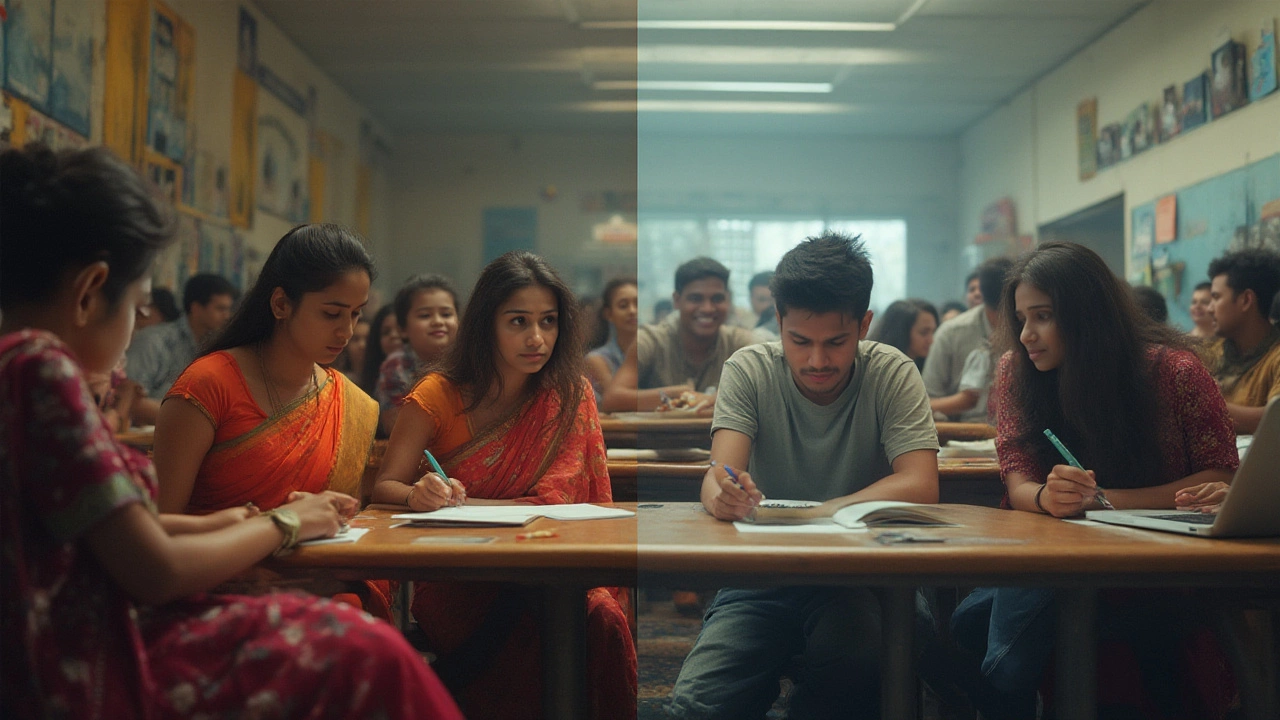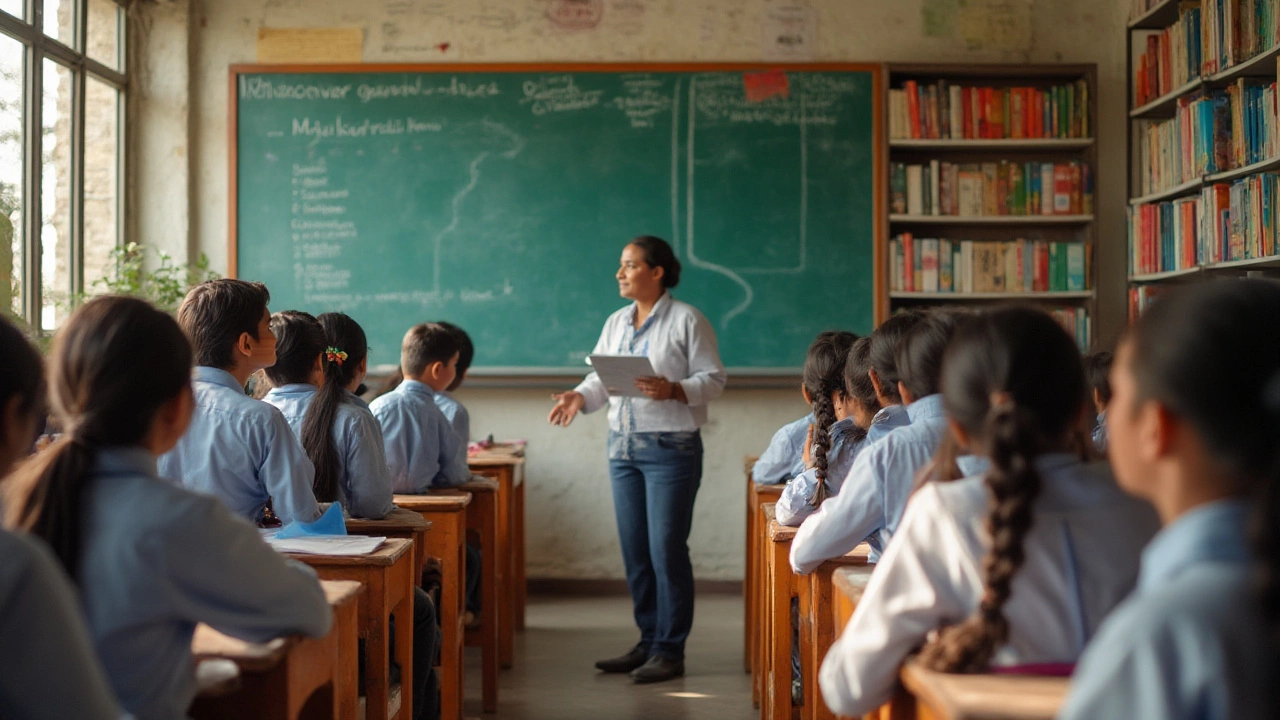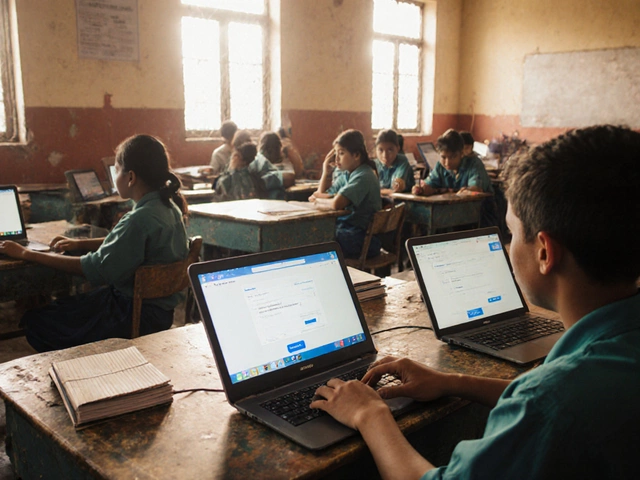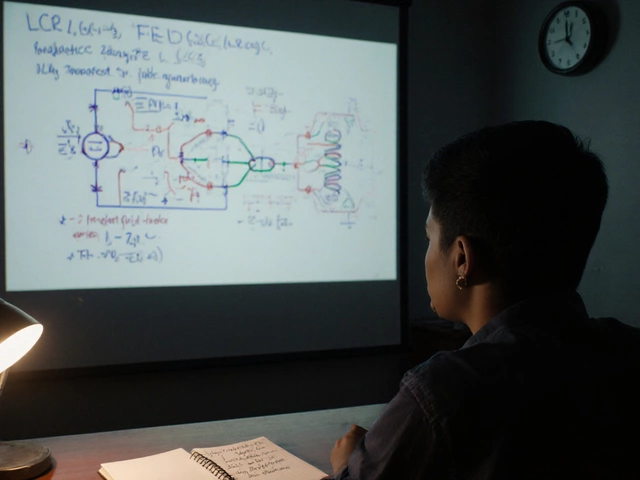Ask three different people which country has better education—India or the USA—and you’ll probably get three different answers. It’s one of those heated dinner table topics, especially if you’ve got relatives who brag about their Ivy League degrees or boast about acing JEE exams back home. But let’s set the family drama aside for a minute and look at what really makes these two systems so wildly different—and why each might suit totally different learners.
What School Life Feels Like: The Day-to-Day Reality
Walk into a typical school in India, and you’re greeted with students in neat uniforms, bells that mark the rigid start and end of classes, and teachers who command serious respect. There’s a healthy dose of memorization (okay, sometimes a little unhealthy too), and scoring high marks in board exams feels like a national sport. Parents keep a close eye on grades, and tutoring—coaching classes—is basically a second school for many.
In the USA, school feels looser and more casual. There’s less focus on uniforms and more on clubs, sports, and volunteering. Sure, tests matter (SAT, anyone?), but there’s room for kids to pick courses that match their interests. A student might mix math with drama and debate. The vibe is: explore, experiment, figure out what really excites you. If you don’t want to memorize, you can dive headfirst into projects, presentations, and class discussions. Teachers go by first names in a lot of places, and while they're still the authority, students are often encouraged to push back, ask questions, and even debate.
Here’s where things get interesting. In India, the structure can be a lifeline; kids know what’s expected. The pressure to perform? Very real. It can create crazy resilience, but can also lead to insane stress. In the US, you get more independence to find your path, but that means some people get lost without enough structure or family support. The flip side is, if you get obsessed with sports or theater, you might let academics slide—there’s a balance, and it isn’t always perfect.
Food for thought: A UNICEF study once pointed out that Indians clock in more hours of homework per week than almost any other country. American students, meanwhile, top global surveys for time spent in extracurriculars. Neither approach is right or wrong; it’s about priorities—do you want academic strength or a rounded skill set?

The Numbers and Nitty-Gritty: Curriculum, Exams, Fees
So let’s talk hard facts. India’s K-12 education serves over 250 million students, the largest school-age population on the planet. Kids go through 10 years of primary and secondary school, then two years of “senior secondary” before college. National exams—like the CBSE, ICSE, and state boards—are a huge deal. Your entire future can rest on your marks at age 16 or 18. It’s a system that's designed to narrow down the best of the best for a limited number of college seats.
The USA, by contrast, has around 56 million K-12 students. There’s no single national curriculum. Instead, states and even local districts decide what students learn—meaning kids in California might read different novels than their cousins in Texas. The US system stretches from kindergarten to 12th grade, but you don’t pick a “stream” (like science, commerce, arts) in high school. You choose from a buffet of electives, and your GPA—a running average of grades—really matters for college. Big tests include the SAT and ACT, though more schools are going test-optional now to widen access.
Fees? Public schooling in both countries is usually free, but huge differences show up when you go private or look at higher education. Indian private schools tend to be much cheaper than their US counterparts, but the gap in facilities, class size, and teaching methods can be ridiculous. Elite “international” schools in Indian cities charge fees that rival top American prep schools, but they’re the exception.
Now here’s a shocker. The USA spends nearly $14,000 per student per year, according to 2024 data from OECD. India’s public spending barely crosses $500 per student. Does more money mean better outcomes? Not always, but it buys smaller classes, better labs, and more individualized attention. Then there’s university tuition—an American private college might set you back $60,000 a year, while an IIT in India could be under $5,000. Of course, that’s if you can actually get in; the Indian entrance exams are tougher than getting front-row seats at a Beyoncé concert.
What about exams? Indian tests are famously tough and all about accuracy and speed. Top scorers grab seats at top colleges, creating a race that leads to a billion-dollar industry in private coaching. In the US, standardized tests once ruled but are slowly losing out to other ways of showing talent—like essays, portfolios, or recommendation letters. The result is a system where creativity and communication skills sometimes trump raw marks.
Both systems have their drawbacks. India’s hyper-competitive environment means students often focus so much on marks, they might not develop real-world problem-solving or teamwork. The US encourages independence but sometimes leaves behind students who don’t have family support, with education quality swinging wildly between wealthy and poorer areas.
Fun fact: The US has eight Ivy League universities that appear on almost every top-50 global ranking. India’s best, like the IITs and IIMs, mainly shine in tech, engineering, and business. There’s debate over which gives you more earning power or job security, but lots of big tech CEOs—from Google’s Sundar Pichai to Microsoft’s Satya Nadella—started out in India before moving west.

How Students Think, Learn, and Launch Careers
The heart of any education system isn’t just the books and buildings. It’s what students take away as adults. Indian classrooms often train kids to follow the rules, learn theory deeply, and respect authority. That kind of rigor is why Indian graduates fill tech jobs worldwide—they’re awesome at problem-solving, especially in subjects where there’s one right answer. The roots of this go back to old-school rote learning, but also a tradition of tough teachers and sky-high family expectations.
But classroom creativity? That’s where things get tricky. Many Indian kids don’t get to experiment much—art class and sports sometimes play second fiddle to science or math. And if you want to switch careers mid-way, it’s harder to do in India because you specialize very early. The concept of a “gap year” is almost unheard of, and changing majors in college can feel like moving mountains.
American schools, in contrast, give tons of freedom to explore. You can drop Spanish for computer science or try three different science clubs in one semester. Soft skills—like teamwork, presenting, or critical thinking—get a lot of love from teachers. College here is all about shaping yourself into a unique (and adaptable) package, which can be golden if you want to pivot careers later. But that freedom comes with risk: some people flounder without enough direction or discipline.
Work opportunities after graduation play out differently too. In India, a single good mark sheet can open big doors at Indian companies or prep you for jobs abroad. But you might hit a ceiling if you don’t also hone communication or leadership skills, which aren’t always taught in the average classroom. In the US, college is as much about networking as what you learn. You meet recruiters, do internships, attend workshops, and land jobs through who you know as much as what you know. That social learning curve can be tough for Indian students who arrive in the US—suddenly, grades aren’t everything.
- If you love strict routines and academic depth, India might feel rewarding—just be ready for the competition.
- If you want to explore, debate ideas, and build soft skills alongside academics, the USA could be your playground—just watch out for student loans.
International rankings keep shifting. A 2023 QS survey showed the US dominating in universities, but Indian high schoolers now win dozens of global math and coding Olympiads. Each system is evolving—India is adding more critical thinking in its new education policy, while US schools debate how to improve rigor in science and math.
Here’s a tip: If you’re unsure which country works for you, try an exchange program or spend a summer at a “boot camp” in the other country. Nothing beats living the experience for yourself. And if you’re a parent choosing for your child, ask what matters: stability and structure, or creativity and freedom?
Think about your learning style, what kind of career you want, and where you see yourself fitting in. There’s no perfect answer. Both countries can prepare you for a fantastic life—if you play to your strengths and grab the opportunities that fit you best.





